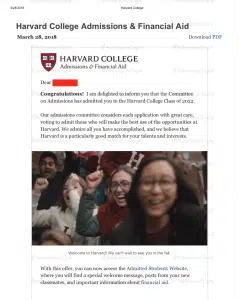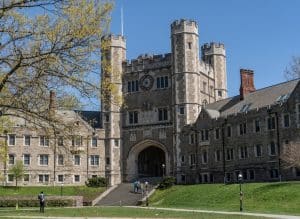Affirmative action in college admissions has always been a hot-button issue. On one side, critics say it’s unfair and messes with a merit-based system. On the other hand, supporters argue it’s essential for creating equal opportunities and bringing diverse perspectives to college campuses.
The debate took a huge turn in 2023 when the Supreme Court ruled that race-based affirmative action was unconstitutional. This decision has shaken up the entire college admissions landscape and left many wondering how schools will continue to promote diversity without these policies in place.
In this blog, we’ll break down what affirmative action in college admissions is all about, the impact it aims to have, and the legal and social implications behind it. It’s a complicated issue, but understanding it is key to grasping the future of higher education.
- What Is Affirmative Action in College Admissions?
- What Impact Was Affirmative Action Designed to Have?
- Is Affirmative Action Constitutional? Key Court Rulings
- Arguments For and Against Affirmative Action in College Admissions
- Affirmative Action Statistics
- Alternatives to Affirmative Action in College Admissions
- The Future of Affirmative Action in College Admissions
- Frequently Asked Questions
- Takeaways
What Is Affirmative Action in College Admissions?
Affirmative action in college admissions is all about creating opportunities for historically underrepresented groups to access higher education. The main idea is to consider race—alongside other factors—during the admissions process to promote diversity and equal chances.
These policies date back to the Civil Rights Movement in the 1960s, when affirmative action aimed to tackle systemic racial discrimination and provide educational access to marginalized groups like African Americans and Hispanic students.
A quick history of affirmative action policies
Affirmative action first came into play when President John F. Kennedy signed Executive Order 10925 in 1961. This order required federal contractors to make sure their hiring and employment practices were free from discrimination based on race, creed, color, or national origin. Over time, this idea made its way into higher education, encouraging colleges to step up their efforts to diversify their student bodies.
The movement gained more traction in the mid-1960s under President Lyndon B. Johnson’s administration, which issued further executive orders and pushed for policies that addressed deep-seated racial inequities. Combined with the Civil Rights Act of 1964, these efforts helped pave the way for affirmative action policies in education, driving institutions to be more proactive about inclusivity and representation.
What Impact Was Affirmative Action Designed to Have?
The main idea behind affirmative action in college admissions was to boost diversity and inclusion, making sure students from marginalized backgrounds had a fair shot at higher education. These policies aimed to create a campus environment where different perspectives could come together, making the educational experience richer for everyone.
For instance, in the key Supreme Court case Grutter v. Bollinger (2003), the Court highlighted the benefits of diversity, stating that a diverse student body served a “compelling state interest.” They ruled that considering race in admissions was acceptable if it aimed to foster a wide range of viewpoints and experiences on campus.
Various studies back this up, showing that students exposed to diverse environments report better cognitive skills and stronger leadership qualities.
Addressing systemic inequities
Beyond just creating diverse campuses, affirmative action was designed to tackle long-standing inequities that had blocked certain groups from accessing higher education. Born out of the Civil Rights Movement, these policies were meant to push back against the institutional discrimination that kept many marginalized groups from getting a fair shot at college.
Historically, affirmative action aimed to level the playing field by providing fairer opportunities to students from disadvantaged backgrounds. These measures have significantly boosted access to education and improved socioeconomic outcomes for minority groups in places like the United States.
While these policies have faced legal challenges and debates, the goals of promoting diversity and addressing deep-rooted inequities remain at the heart of affirmative action. Many worry that without these measures, disparities in higher education might widen, undoing years of progress.
Is Affirmative Action Constitutional? Key Court Rulings
The legal status of affirmative action in college admissions has been shaped by several landmark Supreme Court cases:
1. Regents of the University of California v. Bakke (1978)
It all started with Regents of the University of California v. Bakke in 1978, where the Court ruled against strict racial quotas, like setting aside a specific number of seats for minority students. They said that was unconstitutional. But the ruling also allowed for race to be considered as one of many factors in admissions, emphasizing that promoting diversity was a “compelling state interest” under the Equal Protection Clause.
2. Grutter v. Bollinger (2003)
Then, in 2003, the Supreme Court revisited affirmative action in Grutter v. Bollinger. The justices upheld the University of Michigan Law School’s approach, which used race as part of a broader, holistic review. They believed achieving a “critical mass” of diverse students could offer educational benefits to everyone.
3. Gratz v. Bollinger (2003)
However, in a companion case that same year, Gratz v. Bollinger, the Court struck down Michigan’s undergraduate policy of automatically awarding points to minority applicants. They decided that it wasn’t carefully tailored to the school’s diversity goals.
4. Students for Fair Admissions v. Harvard (2023)
The most recent and groundbreaking legal shift came in 2023 with Students for Fair Admissions v. Harvard. In this case, the Supreme Court ruled that race-based affirmative action was unconstitutional, marking a major departure from prior decisions like Grutter v. Bollinger.
The case targeted both Harvard University and the University of North Carolina, arguing that their admissions practices were discriminatory. The Court’s decision declared that using race in admissions violated the Equal Protection Clause of the Fourteenth Amendment, effectively ending decades of race-conscious admissions policies.
Arguments For and Against Affirmative Action in College Admissions
Supporters of affirmative action see it as a crucial tool for promoting diversity, expanding opportunities, and addressing historical inequalities. Critics, on the other hand, argue that affirmative action leads to reverse discrimination and undermines the idea of merit-based admissions.
Arguments in favor of affirmative action
One major argument for affirmative action is that diverse campuses enrich the college experience by exposing students to different perspectives, which helps them grow intellectually and become more culturally aware. Having students from various backgrounds helps reduce bias and boosts leadership skills and civic engagement, benefiting everyone in the classroom.
Affirmative action also aims to level the playing field. Proponents point out that systemic barriers—like underfunded schools or limited educational resources—disproportionately impact minority communities. By considering race in admissions, affirmative action seeks to offset these disadvantages and give marginalized students a fair shot at higher education.
And it’s not just about getting into college. Studies show that graduates who benefited from affirmative action often earn higher incomes and achieve better professional outcomes than those who didn’t have the same opportunities.
Arguments against affirmative action
Critics claim that race-conscious policies can unfairly disadvantage more qualified applicants from non-minority groups, fueling resentment and perpetuating divisions. A prominent example of this criticism came from the recent case against Harvard, where opponents argued that the school’s policies unfairly discriminated against Asian American students in favor of less-qualified applicants from other groups.
Another criticism is that affirmative action might unintentionally reinforce stereotypes. By making it seem like some students are admitted mainly because of their race, it could feed into perceptions of unearned privilege or inadequacy.
Additionally, some critics question whether affirmative action tackles the root issues, like economic inequality. They suggest that focusing on socioeconomic status might be a more effective and fair way to promote equal opportunity.
Affirmative Action Statistics
Affirmative action in college admissions has historically had a noticeable impact on the makeup of student bodies, especially at top-tier schools. By actively considering race, these policies increased the presence of underrepresented groups like Black, Hispanic, and Native American students. But after the Supreme Court’s 2023 decision to rule out race-based admissions, the numbers have started to shift.
Take MIT, for example. In its newest class, around 17% of students identify as Black, Hispanic, or Indigenous—a drop of 14 percentage points from the previous year. The proportion of Black students alone fell from 15% to just 5%.
Other top schools are facing similar declines. Yale University managed to hold steady with its percentage of Black and Native American students between the classes of 2027 and 2028, but it saw changes in other groups. Meanwhile, Brown University experienced a significant drop in its share of underrepresented minority students, falling from 27% to 18%.
These trends underscore the role that affirmative action policies played in maintaining diversity, particularly in elite colleges that are otherwise tough to crack.
Graduation rates and academic performance
Despite the frequent criticism that affirmative action policies compromise academic standards, the numbers tell a different story.
According to research by the National Bureau of Economic Research (NBER), minority students admitted through these policies tend to graduate at rates similar to their peers. This suggests that the students admitted under affirmative action don’t just make it in—they thrive.
Recently, MIT reported that there was “no change to the quantifiable academic characteristics” of its latest class, even though its racial makeup had shifted post-Supreme Court ruling. This means that race-conscious admissions weren’t sacrificing academic quality for diversity.
Alternatives to Affirmative Action in College Admissions
As schools now pivot to race-neutral strategies, the long-term effects on both diversity and academic performance remain uncertain. The ongoing challenge will be finding new ways to keep campuses diverse without relying on traditional affirmative action policies.
1. Socioeconomic-based admissions
Socioeconomic-based admissions look at factors like an applicant’s financial situation, their parents’ education level, or the challenges of growing up in underfunded neighborhoods. The idea here is to give students who’ve faced economic struggles or attended under-resourced schools a better shot at higher education.
But research shows that this approach doesn’t quite match the level of racial diversity achieved by traditional affirmative action policies. For example, these programs tend to enroll more disadvantaged white and Asian students than Black and Hispanic students, which can lead to a drop in racial representation at top universities.
2. Top percent plans and other approaches
Another strategy some states have tried is the “top percent plan.” Take Texas, for instance. Their Top 10% Plan guarantees admission to any public university for students who graduate in the top 10% of their high school class. It’s been praised for increasing the number of Black and Hispanic students at flagship schools like UT-Austin and Texas A&M, especially from underrepresented high schools.
But these plans have their limitations, mainly because they benefit students from larger or more competitive schools, and they don’t fully address deeper disparities in access to higher education.
The Future of Affirmative Action in College Admissions
The future of affirmative action in college admissions is a bit murky after the Supreme Court’s 2023 ruling that struck down race-based policies.
Now, universities have to find new ways to maintain diversity without explicitly considering race. Many schools are shifting their focus to things like socioeconomic background, first-generation status, and unique life experiences.
What’s next? Civil rights groups are zeroing in on other admissions practices that might indirectly affect diversity, like legacy admissions or heavy reliance on standardized tests. Critics argue these policies favor wealthier, more privileged applicants, and legal challenges are already bubbling up.
For instance, lawmakers like Rep. Bobby Scott are pushing for probes into whether legacy admissions create disparities that could violate civil rights laws.
So, what can colleges do? Universities are feeling the heat to come up with creative ways to keep their campuses inclusive while staying within the law. This might mean revisiting essay prompts to let applicants share their racial or socioeconomic backgrounds or ramping up outreach efforts for underrepresented communities.
It’s clear that the road ahead won’t be straightforward, and institutions will have to stay nimble to keep up with shifting legal landscapes while still prioritizing inclusivity.
Frequently Asked Questions
1. How does affirmative action work in college admissions?
Affirmative action aimed to create diverse student bodies by allowing colleges to consider race in admissions. The goal wasn’t to establish quotas, but to assess an applicant’s race alongside other factors like academic performance, extracurricular activities, and personal experiences. The idea was that a diverse student body enriches campus life and broadens opportunities for historically underrepresented groups.
2. When did affirmative action start in college admissions?
Affirmative action policies took root in the 1960s, during the Civil Rights Movement. It all started with President John F. Kennedy’s Executive Order 10925 in 1961, which required government contractors to avoid racial discrimination in hiring. By the mid-1960s, colleges began adopting these ideas to address past racial discrimination and expand opportunities for underrepresented groups.
3. How did the Supreme Court rule on affirmative action in college admissions?
In June 2023, the Supreme Court struck down race-conscious admissions policies, declaring them unconstitutional. The Court decided that considering race in admissions violated the Equal Protection Clause of the Fourteenth Amendment. This decision effectively ended decades of race-based admissions practices.
4. What is the primary constitutional issue involving affirmative action cases in college admissions?
The big constitutional question is whether considering race in admissions violates the Equal Protection Clause of the Fourteenth Amendment. Proponents say race-conscious policies serve a compelling interest by promoting diversity. Critics, on the other hand, argue that these policies amount to racial discrimination.
5. Does affirmative action still exist in college admissions?
After the Supreme Court’s 2023 ruling, race-based affirmative action is no longer constitutional. However, schools are now focusing on alternative, race-neutral strategies to achieve diversity. This includes considering factors like socioeconomic background, geographic diversity, and first-generation status.
Takeaways
Affirmative action in college admissions is a topic that keeps evolving, and it’s not without its fair share of debates. Here are five main takeaways to keep in mind:
- Affirmative action was introduced to boost diversity and tackle historical inequalities. The goal was to consider race as one of many factors in college admissions and create a more inclusive campus environment.
- Things took a major turn in 2023 when the Supreme Court declared race-based affirmative action unconstitutional. This decision has pushed colleges to rethink how they approach admissions and diversity.
- With race-based policies off the table, colleges are now looking at alternatives like focusing on socioeconomic backgrounds or top percentage plans to keep their campuses diverse.
- If all these changes have left you unsure about your college application strategy, reaching out to an admissions expert could really help clear things up.










































